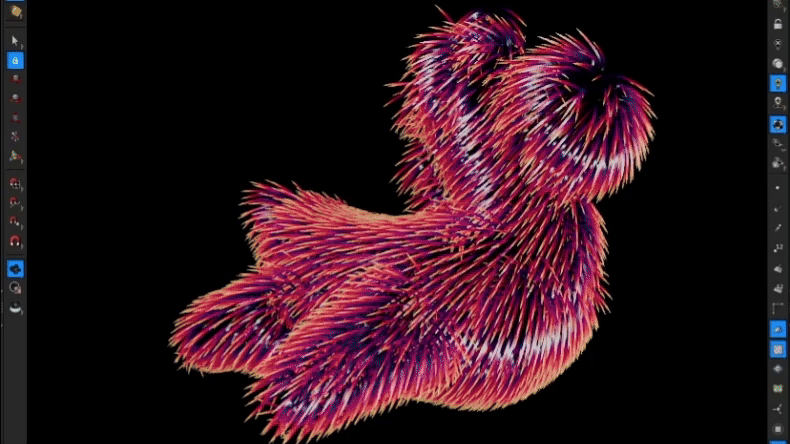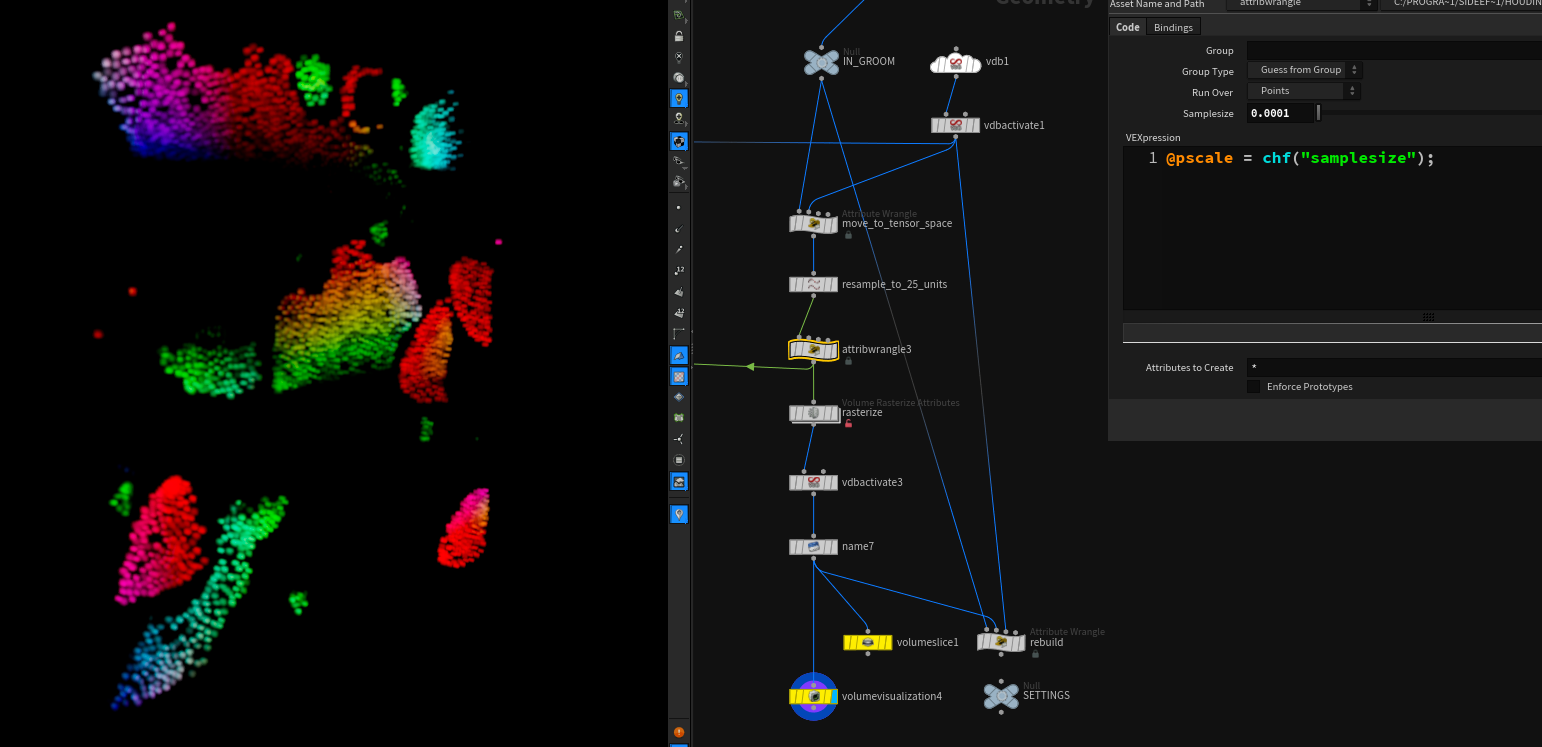Storing Grooms in Volumes
A common problem with most machine learning applications is that you need your data to be of the same size. That means the input or output Tensors have to have the same shape across all of the examples.
That’s why images or volumes or other grid like data structures lend themselves well to machine learning purposes.
I was trying to find a way to express hair/fur grooms in a way that doesn’t change the shape of the data, if you change the hair count or segment length of the groom. I came across this paper on neural interpolation for real-time hair simulation, which had some great ideas.
The main one is to store the groom in a volume.
You can use the UVs of your mesh geometry to specify a new coordinate system consisting of the u and the v axis and use the curveu attribute on each hair as the third axis to move the groom to a new space, which by the nature of UVs becomes cuboid and can be easily rasterized into a volume.

The rasterization part acts like a filter and you lose some information along the way, but I found a volume of 512 x 512 x 20 to already be sufficient in quality for most usecases.

// point wrangle move_to_tensor_space
| |
// point wrangle rebuild
| |
Now you can learn stuff on arbitrary grooms! long, short, thick or thin :)
sources / further reading: